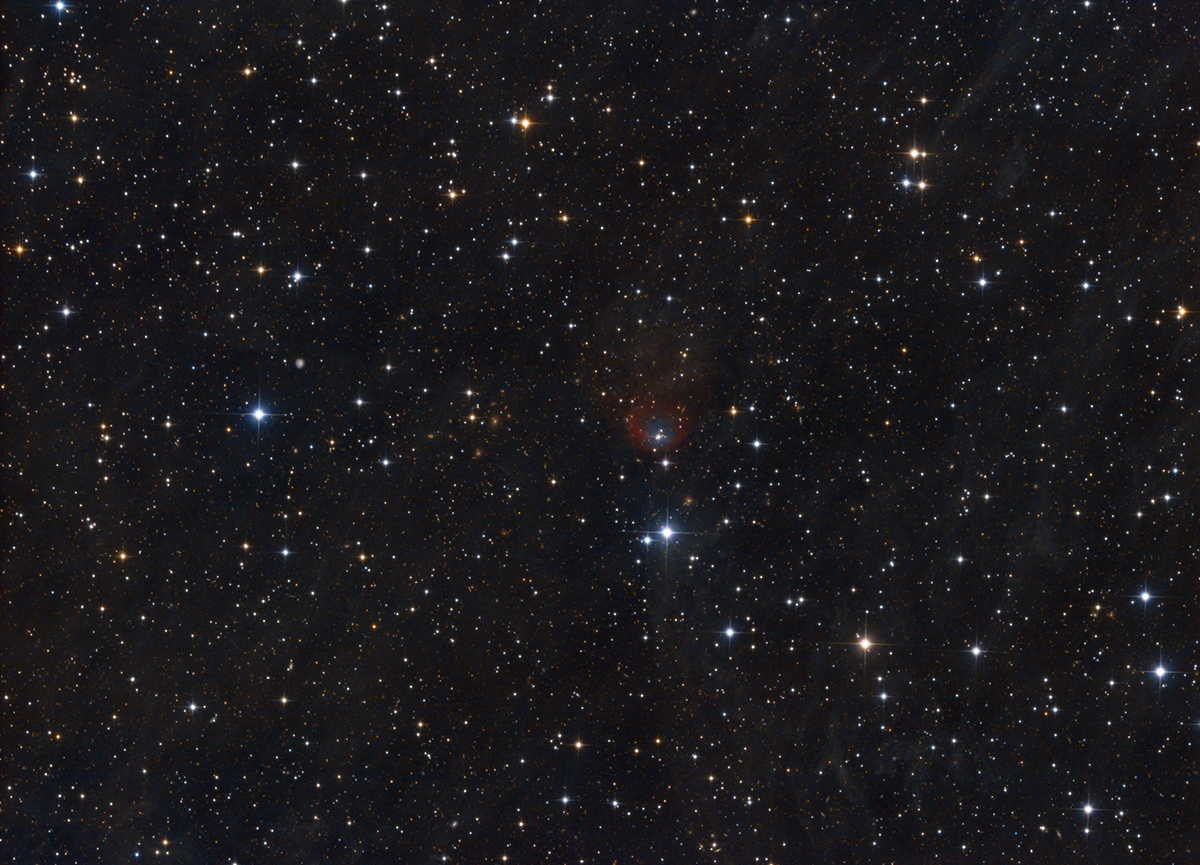
[back] K1-6 (PK 107+21.1, Sleepy Eye Nebula) in Draco
Higher resolved image / Höher aufgelöstes Bild (2190 x 1579)

|
(c) 2019 All astro photo images are copyrighted. They may not be used or reproduced without explicit written permission from the authors. |
|
5' |
|
About this Image / Über dieses Bild
| CCD: | ZWO ASI094MC Pro |
| Image Type, Orientation: | RGB-HaOIII Composite, North is at 12:05h |
| Exposure time: | RGB: 42x300s, Ha/OIII: 85x300s (10:35h total) |
| Exposure date: | September 1st..22nd 2019 |
| Location: | Capella Observatory at Eifel, Germany, remote-controlled from Bad Arolsen/Germany |
| Filter: | RGB: Internal Bayer-Matrix, HA/OIII: STC Astro Duo-Narrowband Filter |
| Instrument: | Ganymed 60cm-Hypergraph in primary focus (f=1815.9 mm) |
|
Image seeing (FWHM): |
2.2" |
| Photographer: | Josef Pöpsel, Frank Sackenheim, Stefan Binnewies |
| Remarks: |
K 1-6 was discovered by Czech
astronomer Lubos Kohoutek in 1962. Kohoutek later became famous for the
discovery of numerous comets and asteroids.
A paper of Australian astronomer David J. Frew et al. shows a colored
image of the planetary nebula, which was inspiration for our aim at this
very faint object. Also visible is some very faint galactic cirrus nebula
covering the whole scenery of the image. Hundreds of faint galaxies, mostly
not catalogued can be seen as well. The PN looks like an eye of a Jazzer having had 10 gigs in four days, doesn't it? |
|
Bemerkungen: |
K1-6 wurde 1962 vom tschechischen Astronomen Lubos Kohoutek entdeckt und
katalogisiert. Kohoutek wurde später berühmt durch die Entdeckung
zahlreicher Kometen und Asteroiden.
Eine Arbeit
des australischen Astronomen David J. Frew et al. zeigt ein Farbbild
des PN, welches als Inspiration für unseren Versuch an dem sehr schwachen
Nebel diente. Im Bild ist außerdem der galaktische Zirrus sichtbar, der sich
ganz schwach durch das komplette Bild zieht, sowie unzählige Galaxien und
Galaxienhaufen, viele davon unkatalogisiert. Die extrem niedrige Flächenhelligkeit von K1-6 ist mehr oder weniger das Limit dessen, was mit Ganymed vom aktuellen Standpunkt in der Eifel zu erreichen ist. Die Bildbearbeitung war trotz >10h Belichtungszeit bei f3 extrem aufwendig. Der PN sieht aus wie das Auge eines Jazzers, der 10 Gigs in vier Tagen hatte, oder? |
Back to the Planetary Nebulae Overview / Zurück zur Planetarische-Nebel-Übersichtsseite